‘The Boys in the Boat’, in Which Eva Is a Sentimental Moron and Spams You With Lots of Pictures
I had an unusual upbringing. Sports were of so little importance to my family that I, at 34, still do not know even the most rudimentary rules to any sportsball games (and don’t bother trying to educate me, because I flatly DO NOT CARE). Nor did I do any track and field stuff.
But when I was growing up, the artier sports were intriguing to me. I read a lot about skaters and ballerinas and equestrians and gymnasts, even though I have never done any of those things at any point in my life either.
The Olympic Games were also not a big part of my growing up years (we had no TV or movies in our house from the time I was 7 to about 18), but my mom became quite the film buff/amateur film historian after that, and I went along for the ride. It was a lot of fun. Along the way my mom, also a WWII buff, started watching Leni Riefenstahl films. It was a very interesting side trip. We watched Triumph of the Will as well as several of her earlier “mountain pictures”, but it was (and for me still is) Olympia that fascinated us most. We watched it a number of times. There is something so majestic about it, so perfectly crafted as it is to make you feel as though you are being lifted up above the common world, or at the very least it will make your heart thrill and your eyes fill with tears. (If you are interested, there is a low-res version uploaded on YouTube, or you can buy it on Amazon and enjoy it in its full glory.)
Anyway, one of my friends, Ruth, recommended The Boys in the Boat some time ago, and I put in a request for it as an audio book on Overdrive and the waiting list was so long I almost forgot about it. Finally it was my turn, and I began to listen.
I repeat, sportsball is so dull to me I would literally rather lick the pavement than watch them. But the context of this particular narrative being Riefenstahl’s Olympics made all the difference.
There is so much talked about in this book. It touches on the effects of the Great Depression on America, the history of rowing, the growth of crew on the West Coast from nothing to stardom, pre-WWII events in Germany as the country prepared to host the Olympics, and also the lives of the rowers themselves, specifically Joe Rantz and his unusual upbringing.
People, I was so strangely moved by this book I felt like I was on the verge of tears many times. I watched clips of the rowing on YouTube and that made it even more emotional for me.
And then this past Sunday I was on the way to Seattle with a friend and a thought popped into my head and I asked her, “HOW FAR IS THE UNIVERSITY OF WASHINGTON FROM YOUR PLACE?” and she said “MAYBE 20 MINUTES” and she said “WHY” and I said “THE 1936 CREW SHELL IS HANGING ON DISPLAY IN THE SHELLHOUSE CAN WE GO” and she was all “YAAASSS” so we WENT.
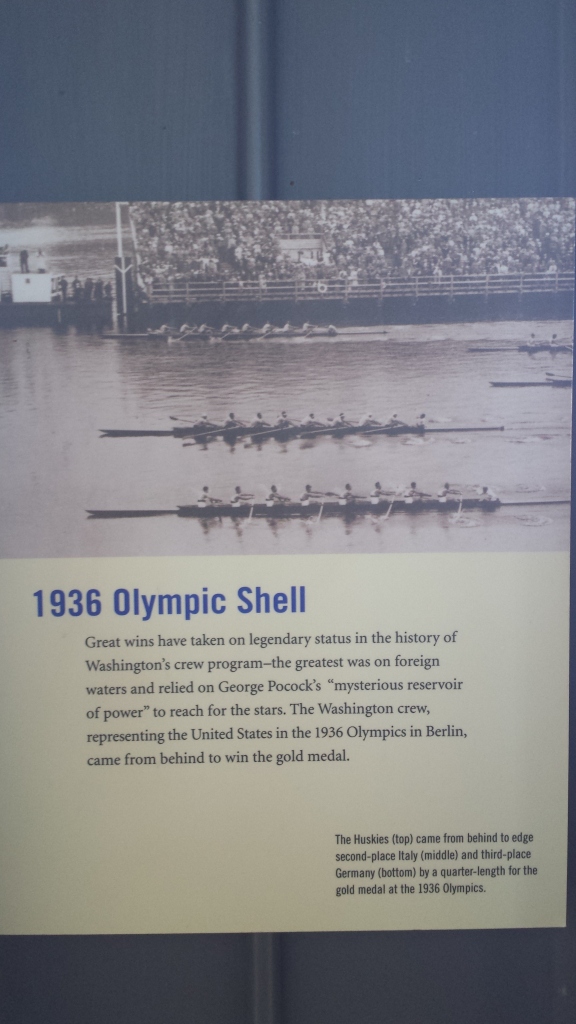
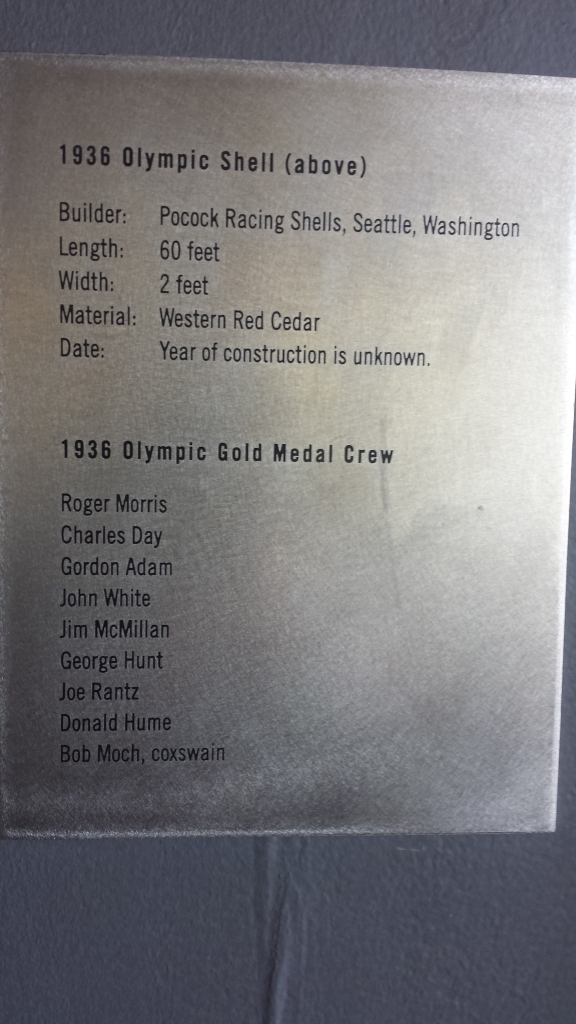


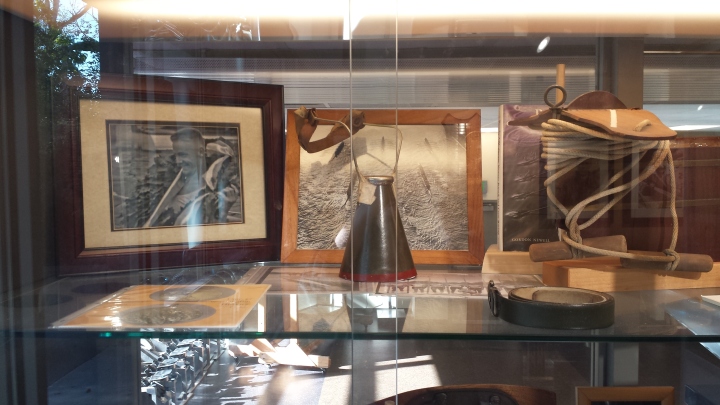

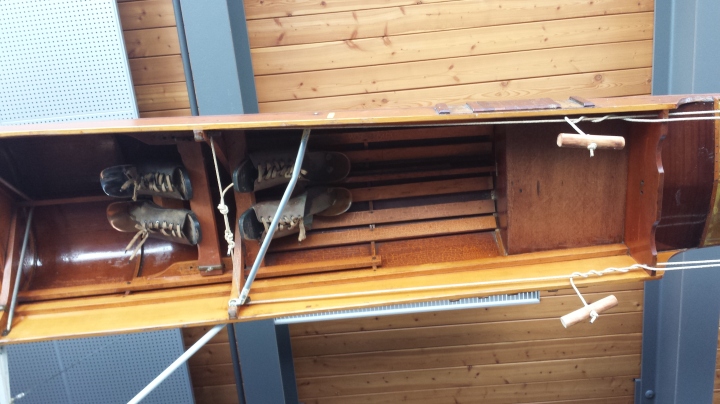
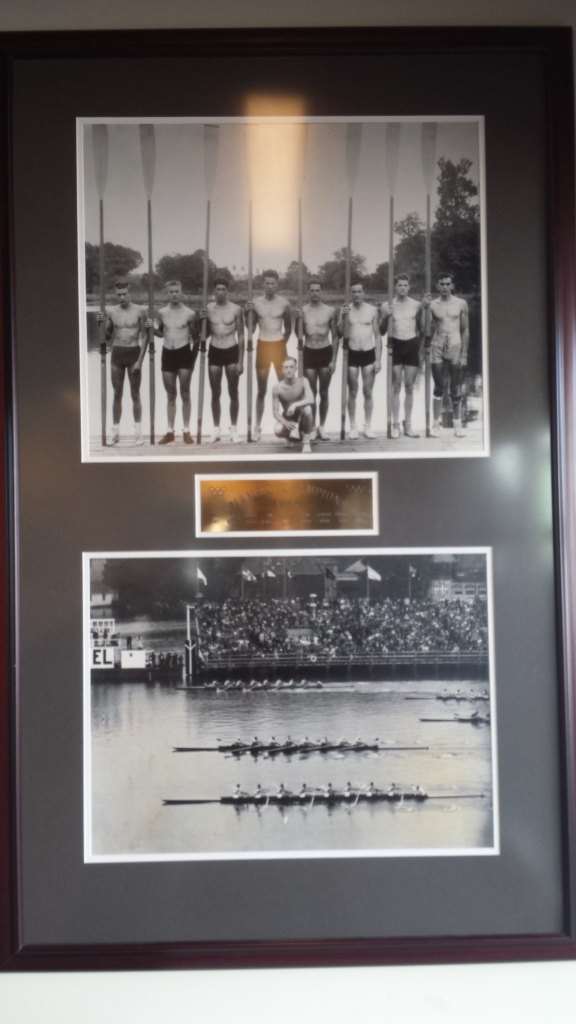

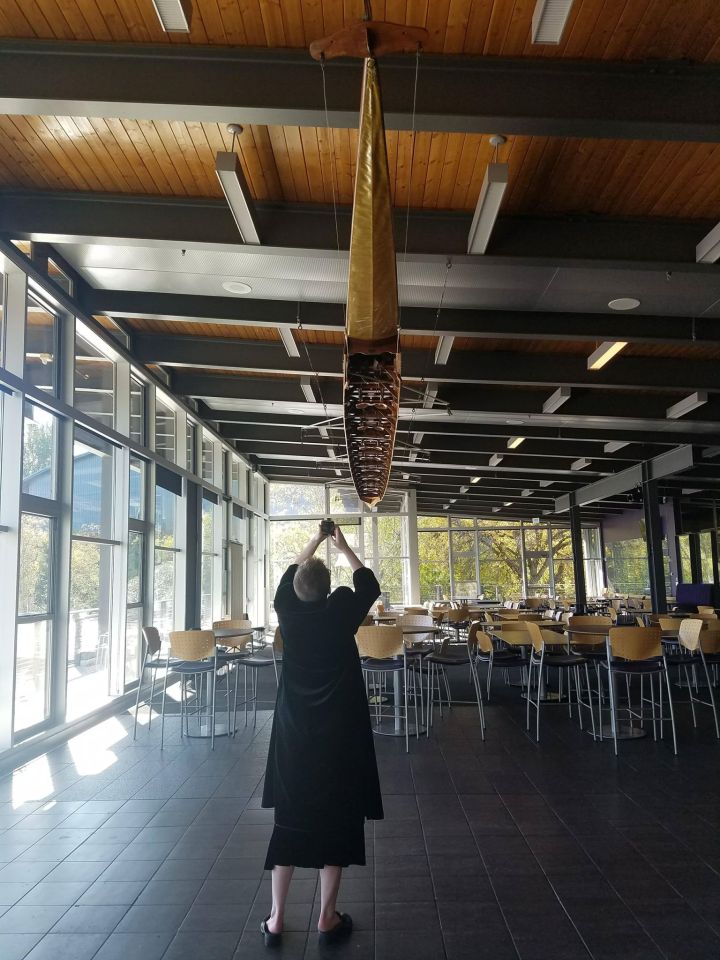
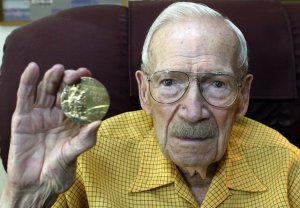
–Eva
Eva Seyler
Eva was born in Jacksonville, Florida. She left that humidity pit at the age of three and spent the next twenty-one years in California, Idaho, Kentucky, and Washington before ending up in Oregon, where she now lives on a homestead in the western foothills with her husband and five children, two of whom are human.

One Comment
Pingback: